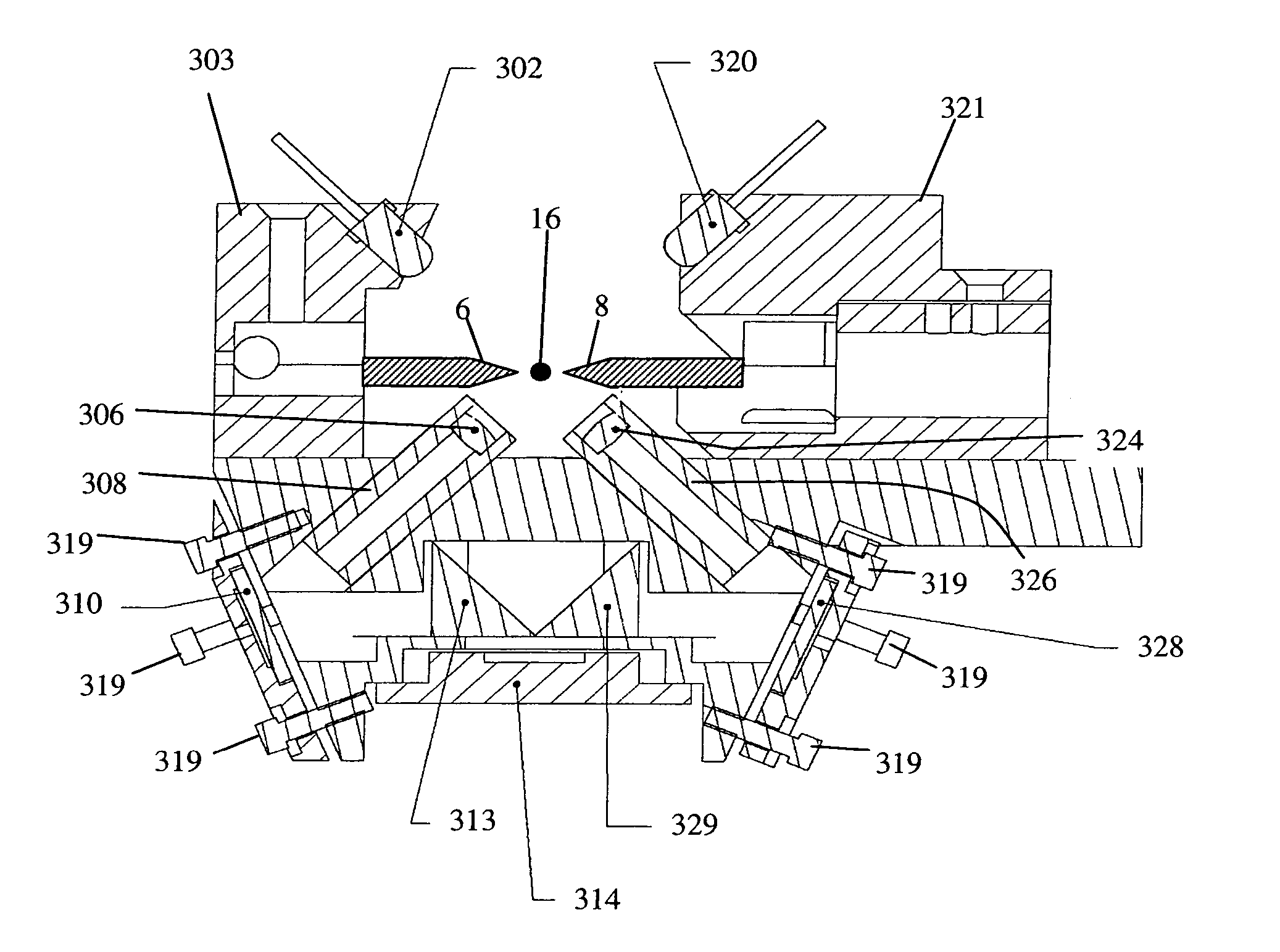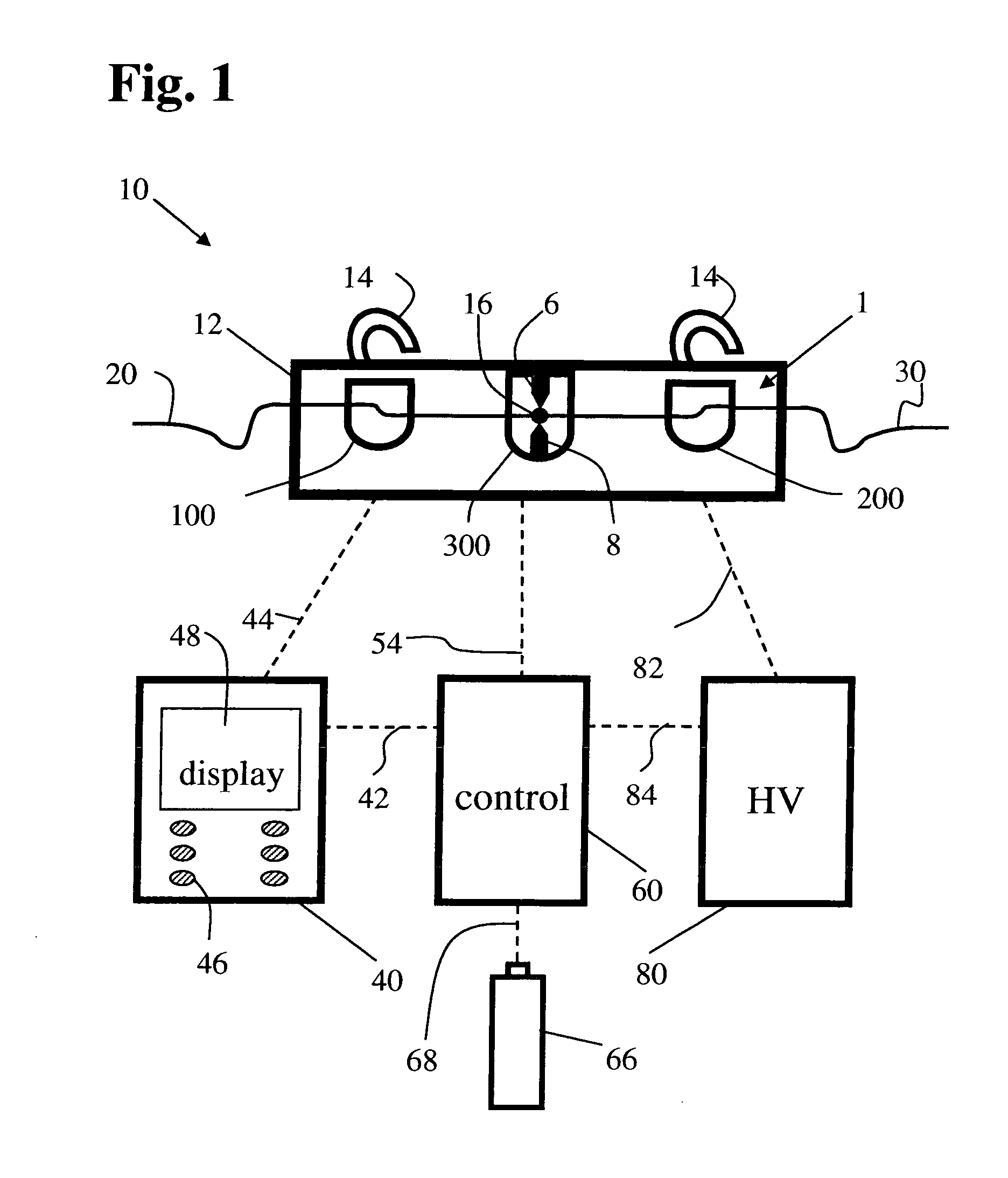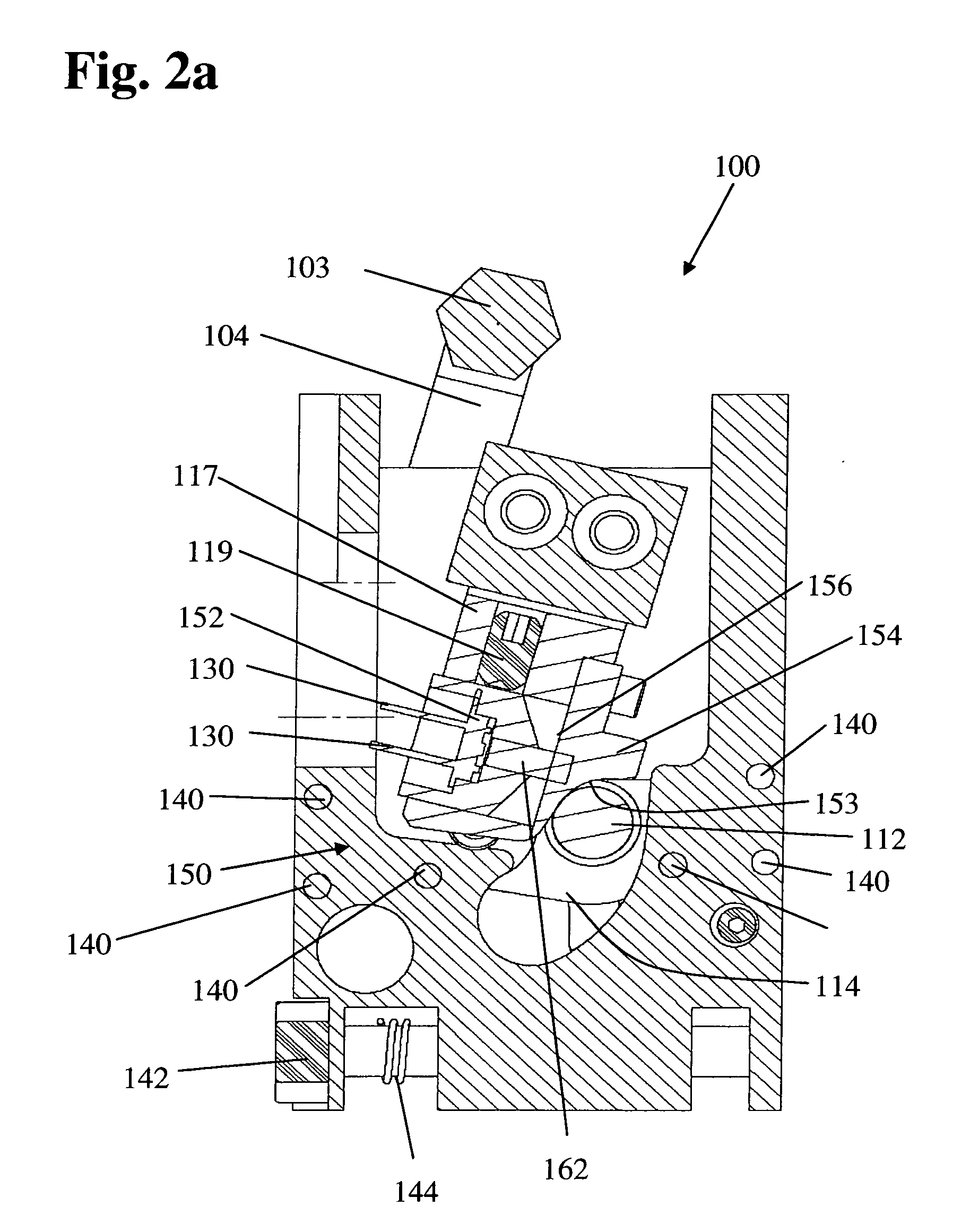Low profile system for joining optical fiber waveguides
a technology of optical fiber waveguides and low profile, applied in the direction of glass making apparatus, testing of fibre optic/optical waveguide devices, structural/machine measurement, etc., can solve the problems of difficult repair access, affecting the repair process, so as to minimize the loss of spliced fibers, the effect of low profile and low profil
- Summary
- Abstract
- Description
- Claims
- Application Information
AI Technical Summary
Benefits of technology
Problems solved by technology
Method used
Image
Examples
Embodiment Construction
[0054] The present invention is directed to a compact, low profile apparatus and system for joining optical fiber waveguides to produce a durable fusion splice between a first and a second optical fiber. The joined fiber advantageously exhibits low attenuation. Advantageously the present system employs an adaptive technique to optimize the alignment of the fibers prior to fusion, whereby the insertion loss of the splice is minimized.
[0055] Referring now to FIG. 1 there is depicted generally an implementation of a modular, low profile fusion splicing system 10 of the invention. Fusion splicing head 1 of the invention incorporates a local injection and detection system. First and second optical fibers 20, 30 are positioned in light injector 100 and light detector 200, aspects of which are depicted in greater detail by FIGS. 2A-2B and 3A-3B, respectively. The free ends of the fibers 20, 30 appointed to be joined are situated in facing, collinearly aligned relationship in fusion splici...
PUM
| Property | Measurement | Unit |
|---|---|---|
| wavelength ranging | aaaaa | aaaaa |
| diameters | aaaaa | aaaaa |
| diameter | aaaaa | aaaaa |
Abstract
Description
Claims
Application Information
 Login to View More
Login to View More - R&D
- Intellectual Property
- Life Sciences
- Materials
- Tech Scout
- Unparalleled Data Quality
- Higher Quality Content
- 60% Fewer Hallucinations
Browse by: Latest US Patents, China's latest patents, Technical Efficacy Thesaurus, Application Domain, Technology Topic, Popular Technical Reports.
© 2025 PatSnap. All rights reserved.Legal|Privacy policy|Modern Slavery Act Transparency Statement|Sitemap|About US| Contact US: help@patsnap.com



